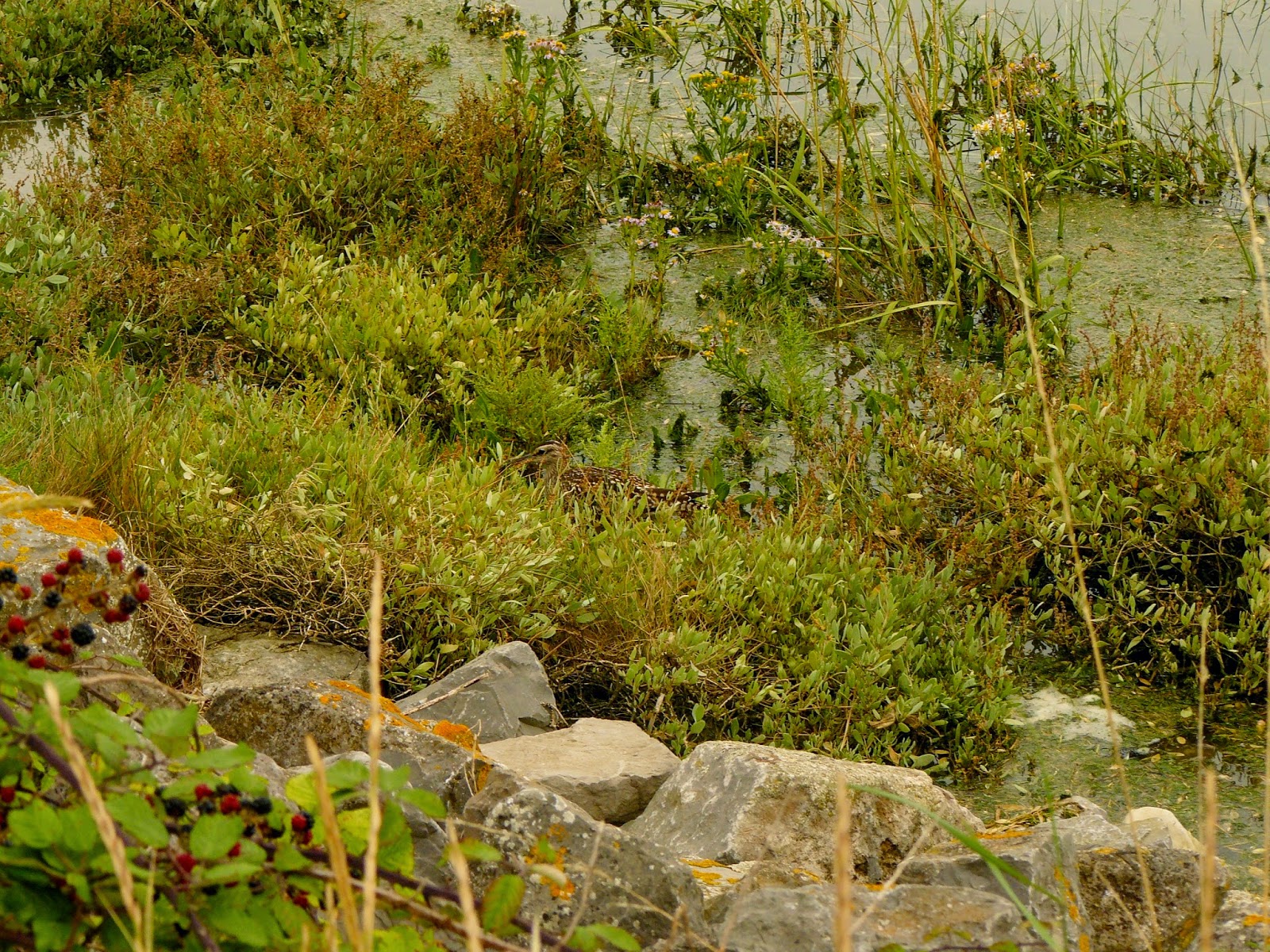Pagham Harbour is a glorious and peaceful nature reserve,
one of the few undeveloped stretches of the Sussex coast, and an
internationally important wetland site for wildlife. Above is a picture from high tide yesterday. http://www.rspb.org.uk/reserves/guide/p/paghamharbour/about.aspx describes it as
"a big, sheltered inlet that fills and empties with each
tide, with wild ducks, geese and wading birds flighting to and fro. With a
wealth of wildlife, beautiful landscapes, and a rich historical heritage, it is
a great place to get away from it all.
There is something of interest all year round. Resident
species include little egrets, ringed plovers and lapwings. In spring and
autumn, all sorts of migrant birds pass through. In the summer, lapwings and
little terns breed, and butterflies flit along the hedgerows, dragonflies
patrol the ponds, and lizards bask in the sun."
There was a bird of great interest this day; a Whimbrel which may have flown from the Shetland Isles or the Arctic. Did you spot the Whimbrel in the first picture?It was feeding on a crab which it pecked and tossed around a bit and finally seemed to swallow.
Interested in a public speaker on Natural History? Please see www.peterlovetttalks.co.uk or for
guided walks please see www.peterlovettwalks.eu.






















































